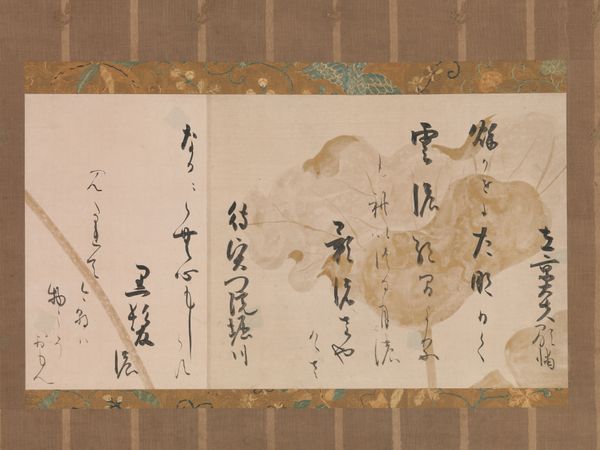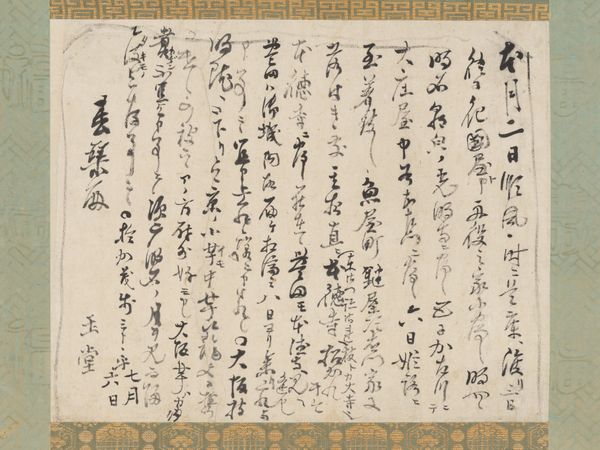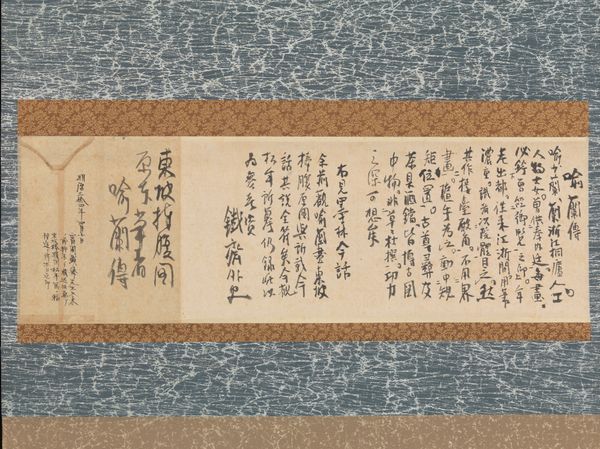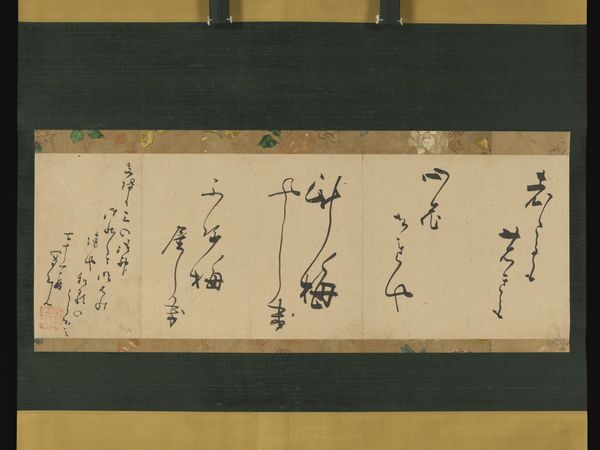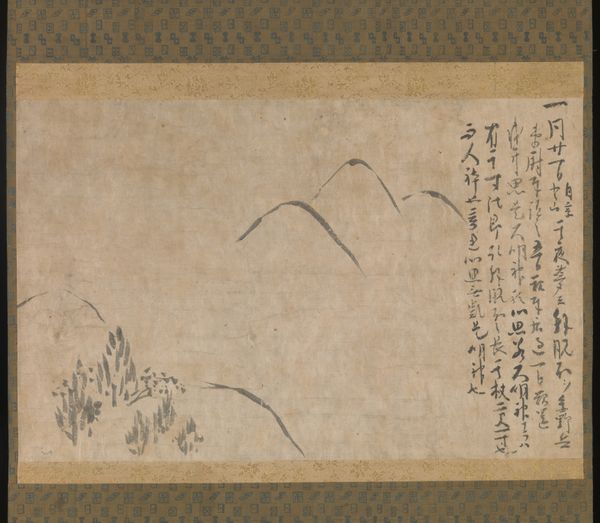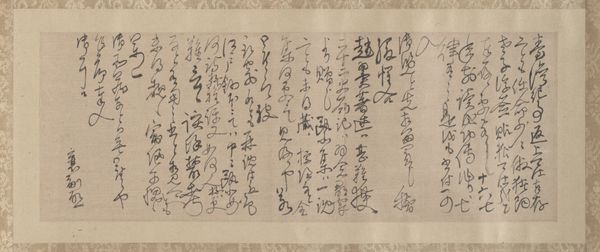
watercolor
#
water colours
#
asian-art
#
ukiyo-e
#
watercolor
#
yamato-e
#
calligraphy
Dimensions: Image: 7 3/16 × 20 1/8 in. (18.3 × 51.1 cm) Overall with mounting: 36 1/2 × 21 1/8 in. (92.7 × 53.7 cm)
Copyright: Public Domain
Curator: So, let's consider this watercolor piece, “Letter,” crafted by Shiba Sonome in 1696. What strikes you initially about it? Editor: Well, it's delicate, almost ephemeral, despite being centuries old. I'm intrigued by the text itself—the calligraphy, of course—but also how it sits within that patterned border. What’s the interplay between text and textile telling us, do you think? Curator: Precisely. The layering of material realities is key here. Consider the production of the paper itself, the pigments used for the ink and background, and the labor involved in weaving the textile. How does understanding these processes influence our perception of the ‘letter' itself—its purported message or sentiment? Editor: I see what you mean. The context shifts it from just a personal communication to a carefully constructed object, involving a whole network of craftspeople and resources. It’s less about *what* the letter says and more about *how* it was made, and *what* materials constitute its message. Curator: Indeed. And what about the accessibility of these materials? Who had access to fine paper, pigments, and skilled textile weavers in 17th-century Japan? This shifts our focus to class, privilege, and the socio-economic landscape within which this 'Letter' was created and consumed. It blurs boundaries; it questions hierarchies embedded in art history. Editor: So, by examining the materials and production, we move beyond a simple aesthetic appreciation to understand its cultural and economic context. That’s fascinating. Curator: It's about seeing art as a product of labor and materiality. The object carries a history of production, and consuming this history can radically alter the viewer’s relationship with it. Editor: It’s given me a totally different way of appreciating this, considering its physical construction as a form of messaging in itself. Curator: Absolutely! That’s materiality offering a new lens.
Comments
No comments
Be the first to comment and join the conversation on the ultimate creative platform.
